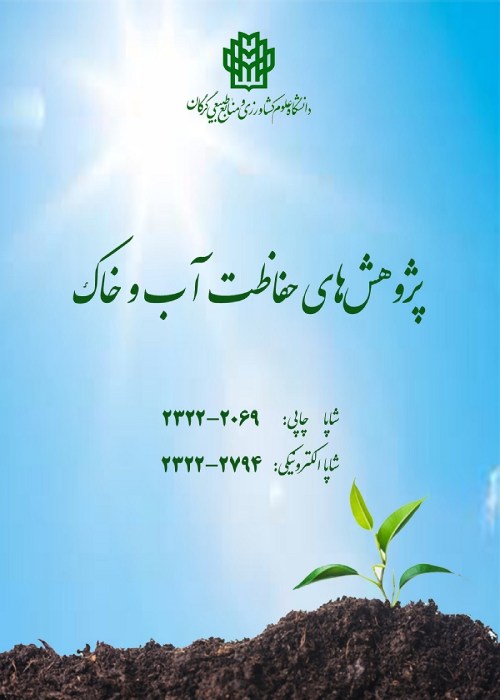Effectiveness of Water Allocation Based On Water Permits Trading of Farmers under Uncertainty (Case Study: Abbas Abad Village, Voshmgir Dam)
Author(s):
Abstract:
Background And Objectives
One of the most important performance of the water market is creation of the legal and formal space for water permits trading among farmers. Water trading policy arises in the agricultural sector as a new strategy on issues related to water resources management, particularly in drought conditions. The strategy includes a set of goals increase productivity, improve conservation and sustainability of water resources. Therefore before of the formation any water market, awareness of the effectiveness and efficiency of water permits trading can be a great help to the formation or Non-formation of water market. The aim of this study is Assessment the effectiveness of the water permits trading program as a solution in optimal use of water among farmers and farm management.Materials And Methods
In this study for assessment of the effectiveness the water permits trading among farmers, two water allocation programs under Non-trading and trading systems is designed based on Interval-Parameter Two-Stage Stochastic Program model. The first mechanism is water allocation in Non-trading system and the second mechanism is water allocation in trading system and then the obtained results of two systems is compared with each other based on water volume is released through trading (saving in water consumption) and decrease in water scarcity. 32 farmers existing in Abbas Abad village were selected that all of them use water of Voshmgir dam that located in Aq Qala city.Results
The results showed that water allocation with the implementation of the trading program will change so that that under this program, the total amount of water consumption is [984/16, 1112/67] ×103 m3 with [184, 208] ha and the total of water scarcity in this program is [228/14, 377/01] ×103 m3. Whereas in Non-trading program the consumption is [1250, 1298] × 103 m3 in [233, 242] ha and water scarcity is [468/32, 681/19] ×103 m3. Also the total profit of two system in both of two programs is [154/543, 222/431] million toman.Conclusion
With attention to the two indexes, saving in water consumption and decrease amount in water scarcity as effectiveness indexes, in total, saving in water consumption with the implementation of the trading program is [185/34, 265/01] ×103 m3 in this village, also under this program water scarcity will be reduced to [240/17, 344/17] ×103 m3 in compared to non-trading program in the dry season with protection the profits of farms. Therefore water trading can lead to more effective and more optimal water allocation especially in drought conditions. Keywords:
Language:
Persian
Published:
Water and Soil Conservation, Volume:23 Issue: 5, 2017
Pages:
141 to 158
magiran.com/p1659939
دانلود و مطالعه متن این مقاله با یکی از روشهای زیر امکان پذیر است:
اشتراک شخصی
با عضویت و پرداخت آنلاین حق اشتراک یکساله به مبلغ 1,390,000ريال میتوانید 70 عنوان مطلب دانلود کنید!
اشتراک سازمانی
به کتابخانه دانشگاه یا محل کار خود پیشنهاد کنید تا اشتراک سازمانی این پایگاه را برای دسترسی نامحدود همه کاربران به متن مطالب تهیه نمایند!
توجه!
- حق عضویت دریافتی صرف حمایت از نشریات عضو و نگهداری، تکمیل و توسعه مگیران میشود.
- پرداخت حق اشتراک و دانلود مقالات اجازه بازنشر آن در سایر رسانههای چاپی و دیجیتال را به کاربر نمیدهد.
In order to view content subscription is required
Personal subscription
Subscribe magiran.com for 70 € euros via PayPal and download 70 articles during a year.
Organization subscription
Please contact us to subscribe your university or library for unlimited access!



